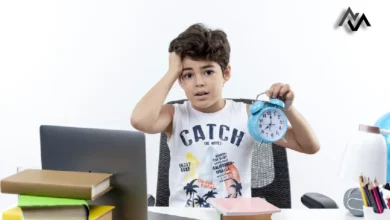Strategies to Enhance Students’ Creative Writing Skills in Schools

Creative writing is a vital skill that empowers students to express their thoughts, emotions, and ideas. Encouraging creativity through writing not only improves linguistic abilities but also enhances critical thinking and problem-solving skills. However, fostering creative writing in students can be challenging. Here, we explore various effective strategies to enhance students’ creative writing skills in schools, making the learning experience engaging and fulfilling.
1. Incorporate Free Writing Sessions
One of the most effective ways to spark creativity in students is to introduce free writing sessions. During these sessions, students are encouraged to write without worrying about grammar, spelling, or structure. The primary goal is to allow them to express their thoughts freely. This practice helps break down mental barriers, letting students’ ideas flow naturally. Teachers can prompt students with open-ended questions or themes to inspire their writing.
2. Use Creative Writing Prompts
Writing prompts can ignite a student’s imagination by providing a starting point for their stories. These prompts can be in the form of a question, a situation, or even an image. For example, “Imagine you woke up in a world where everyone could fly—describe your day.” By offering a diverse range of prompts, students learn to explore different genres and styles of writing, which broadens their creative horizons.
3. Encourage Reading to Foster Writing Skills
Reading and writing are intrinsically linked. Exposure to different genres, styles, and vocabulary through reading can significantly influence a student’s writing abilities. Teachers should encourage students to read a variety of materials, from novels and poetry to short stories and essays. As students absorb different writing techniques, they become more equipped to experiment with their own writing styles.
4. Create a Safe and Supportive Environment
For students to explore their creative writing skills, they need to feel safe to express themselves without fear of criticism or ridicule. Teachers should foster a classroom environment that values every student’s unique perspective. Constructive feedback should be offered gently, focusing on the strengths of their writing while providing suggestions for improvement. This supportive atmosphere encourages students to take risks in their writing, leading to greater creativity.
5. Incorporate Peer Review Sessions
Peer review sessions can be incredibly beneficial for young writers. Allowing students to share their work with classmates can provide new insights and perspectives. It also teaches them how to give and receive constructive feedback. During these sessions, students can learn from each other’s strengths and areas for improvement, leading to a more collaborative and enriching learning experience.
6. Integrate Technology in Creative Writing
In today’s digital age, technology can be a powerful tool to enhance creative writing. There are numerous writing apps and platforms designed to inspire and support young writers. Blogs, digital storytelling, and interactive writing platforms provide students with diverse outlets to showcase their creativity. Incorporating these technologies into the classroom can make writing more engaging and relatable to students who are already accustomed to using digital tools in their daily lives.
7. Introduce Creative Writing Games and Activities
Learning through play can make creative writing more enjoyable for students. Incorporating games such as “Story Cubes,” “Character Mix-Up,” or “Word Association” can stimulate students’ imagination and help them overcome writer’s block. These activities can also be tailored to suit different age groups and skill levels, making creative writing accessible to all students.
8. Use Multisensory Approaches
Engaging multiple senses can enhance students’ creative thinking. Encourage students to write stories based on sensory experiences such as sounds, smells, or textures. For instance, bring an object to the classroom and ask students to write a story inspired by it. This multisensory approach helps students create vivid descriptions and brings their writing to life.
9. Set Up Writing Challenges and Competitions
Friendly competition can motivate students to push their creative boundaries. Organizing writing challenges and competitions encourages them to experiment with different genres and themes. Offering rewards or recognition for participation and effort, rather than just the final outcome, ensures that students remain motivated and engaged in the process of creative writing.
10. Encourage Journaling
Journaling is a personal and reflective form of writing that allows students to explore their thoughts and feelings in a private, pressure-free environment. Encourage students to maintain a daily journal where they can jot down their ideas, experiences, and reflections. Over time, journaling can help students develop their voice and style, making it an invaluable tool in their creative writing journey.
Conclusion
Enhancing students’ creative writing skills requires a combination of strategies that make writing enjoyable and rewarding. By creating a supportive environment, providing diverse prompts, incorporating technology, and using innovative activities, teachers can unlock the creative potential within each student. As students become more confident in their writing abilities, they will not only improve their communication skills but also develop a lifelong love for creative expression.




